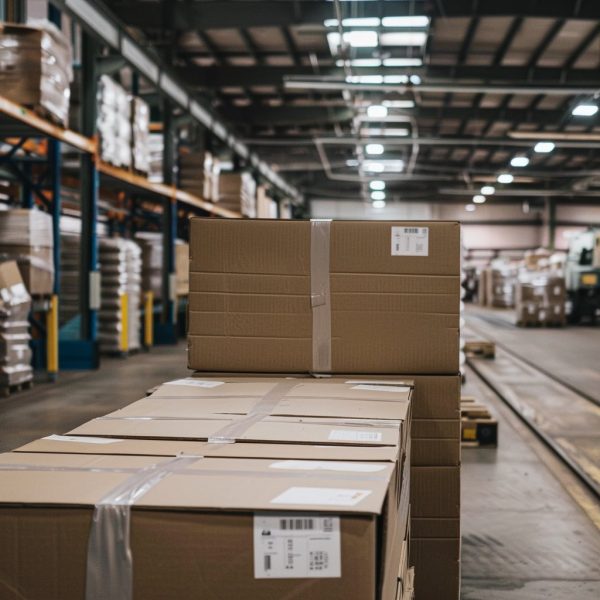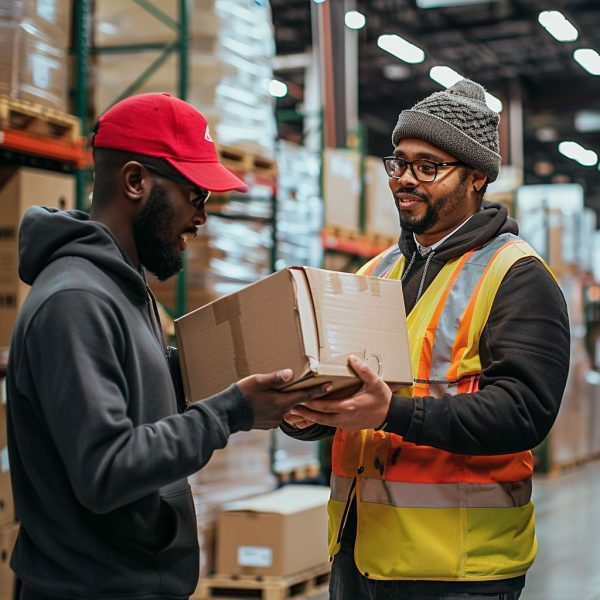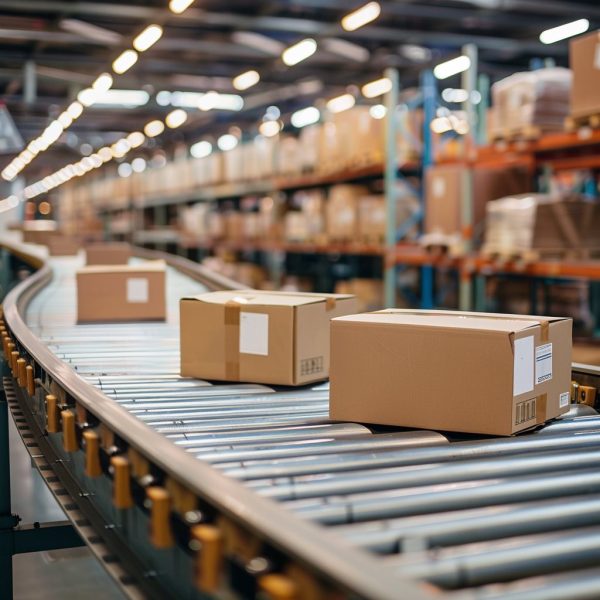Table of Contents
Fundamentals of Packaging in Logistics
Proper packaging in logistics ensures that products are protected, easy to handle, and efficient to transport.
Understanding the purpose and types of packaging materials is crucial in optimizing the supply chain.
Definition and Purpose of Packaging
Packaging serves several essential purposes in logistics. It protects the product during transit, shielding it from damage, contamination, and theft. This is vital for maintaining product quality and safety.
Packaging facilitates handling and storage. Properly designed packaging allows for easy stacking, loading, and unloading, minimizing manual labor and reducing the risk of accidents.
Packaging aids in identification and tracking. Labels, barcodes, and QR codes on packaging help identify products accurately, ensure accurate inventory management and tracking throughout the supply chain.
Types of Packaging Materials
There are various types of packaging materials used in logistics, each with its specific benefits:
- Corrugated cardboard: Commonly used for shipping boxes due to its durability and cost-effectiveness.
- Plastic: Used for containers and shrink wrap; offers versatility and protection against moisture.
- Metal: Employed for heavy-duty packaging, especially for large and valuable items.
- Wood: Often used for pallets and crates, providing strong support for heavy loads.
Understanding the right material for your product is key to ensuring efficient and secure logistics. Choosing appropriate materials can reduce costs, minimize damage, and enhance the overall efficiency of the supply chain.
Looking for a 3PL Company for your Amazon Product or Ecommerce Business?
The Role of Packaging in Product Protection
Proper packaging is critical in protecting products from damage during transit and severe weather. This ensures that items reach customers in good condition.
Mitigating Transit Damage
During shipping, products face various risks of damage, such as impacts, vibrations, and rough handling.
Packaging materials like bubble wrap, foam, and corrugated boxes help absorb shocks and cushion items. Specialized packaging, such as foam inserts or double-boxing, offers extra protection for fragile goods.
Using sturdy materials like corrugated cardboard can prevent crushing and puncturing.
Packaging should be designed to fit the product snugly to reduce movement inside the box, minimizing the risk of internal damage. Proper labeling, like “Fragile” or “Handle with Care,” alerts handlers to take extra precautions.
Weatherproofing and Containment
Packages often face exposure to moisture, temperature changes, and dust.
Weatherproof packaging includes water-resistant plastics, foil laminates, and wax-coated boxes. These materials protect against water and humidity, keeping products dry and intact.
Sealing techniques like heat sealing or airtight containers ensure no external elements enter the package.
Insulated packaging helps maintain a stable internal environment in extreme temperatures, crucial for items sensitive to heat or cold.
Using the right packaging solutions, you can protect products from environmental impacts and ensure they arrive in optimal condition
Cost Implications of Packaging
Proper packaging in logistics directly affects both the quality of products and the cost of transportation. Balancing these factors is crucial for maintaining efficiency and staying within budget.
Balancing Cost and Quality
Choosing the right packaging materials can prevent damage during transit, thus reducing losses.
High-quality packaging materials often come at a higher price, so you must balance cost and durability.
Cheaper materials might save money upfront but could lead to increased damage rates, which in turn could raise overall costs.
Consider material strength, reusability, and cost when making packaging decisions.
Using sustainable materials might also impact costs. While often more expensive, these materials can enhance your company’s image and reduce long-term expenses related to waste management.
Impact on Transportation Expenses
Packaging design influences the amount of space products take up, affecting transportation costs.
Bulky or heavy packaging reduces the number of units you can fit in a truck or container, increasing costs per unit.
Optimizing packaging size and weight allows you to maximize space in transportation units. Efficient packaging designs lead to fewer trips and lower fuel costs.
Using lighter packaging reduces wear on transport vehicles. This can lower maintenance costs and extend the lifespan of your fleet.
Focusing on creating packaging solutions that minimize weight and space without compromising product protection.
Sustainability Considerations in Packaging
Effective packaging solutions play a crucial role in achieving sustainability in logistics. Two of the most important considerations are using eco-friendly materials and reducing packaging waste.
Eco-Friendly Materials
Using eco–friendly materials can significantly reduce the environmental impact of packaging.
Materials like biodegradable plastics, recycled paper, and compostable materials are becoming popular alternatives to traditional options.
Biodegradable plastics break down faster than conventional plastics, minimizing long-term waste. Recycled paper reduces the demand for new resources, saving trees and energy. Compostable materials can return nutrients to the soil, enhancing soil health and reducing landfill waste.
Choosing eco-friendly materials can also improve brand image and meet growing consumer demand for sustainable practices. Keep in mind, assessing the overall life cycle impact is important to ensure true sustainability benefits.
Reducing Packaging Waste
Reducing packaging waste involves designing packages that use less material without compromising protection.
This can be achieved through innovative design, right-sizing, and modular packaging.
Innovative design focuses on creating efficient yet effective packaging. Right-sizing ensures that the packaging matches the size of the product, cutting down on excess material. Modular packaging allows components to be reused or repurposed, extending their lifecycle.
By implementing waste reduction strategies, companies can lower their environmental impact and realize cost savings in material and transportation expenses.
Efficient packaging reduces the volume and weight of shipments, contributing to lower carbon emissions during transport.
Regulatory and Compliance Issues
When dealing with logistics, packaging must follow various rules and standards. These regulations ensure safety, legality, and efficiency, especially in international shipping and handling hazardous materials.
International Shipping Standards
With international shipping, packaging must meet global standards.
Compliance with regulations like the International Maritime Dangerous Goods (IMDG) Code and International Air Transport Association (IATA) rules is critical. These standards govern how goods are packaged and labeled.
Proper documentation is also crucial. Customs authorities require accurate shipping documents to clear goods efficiently. Incorrect or incomplete documentation can cause delays and extra costs.
Ensuring the packaging matches international requirements helps avoid legal issues and ensures smooth transit of goods across borders.
Safety and Hazardous Materials Handling
Handling hazardous materials brings strict rules to ensure safety.
The Occupational Safety and Health Administration (OSHA) and Department of Transportation (DOT) have regulations for safe packaging and transportation of dangerous goods.
Containers must be sturdy, and materials must be clearly labeled. Packaging should prevent leaks or spills, reducing danger during transit.
Training personnel handling hazardous materials is mandatory to ensure they understand and follow all safety protocols.
Following these regulations protects not only the shipment but also the people involved in the logistics process.
Frequently Asked Questions
Amazon FBM, or Fulfillment by Merchant, is a method of selling on Amazon where sellers handle all aspects of storage, shipping, and customer support independently. Sellers list their products in the Amazon store, set their shipping rates, and store their inventory in their fulfillment center.
To start selling on Amazon with FBM, sellers need to create an Amazon seller account, choose a selling plan, list their products on Amazon, set their own shipping rates, and store their inventory in their own fulfillment center.
With FBM, sellers have greater control over their fulfillment process, can customize shipping rates and templates, maintain their own branding, and potentially yield higher profits. FBM may be more cost-effective for sellers with low sales volumes or unique products.
Sellers using FBM on Amazon need to continuously monitor inventory levels, make strategic decisions based on demand and seasonality, and regularly update inventory quantities. It is important to ensure enough stock to meet customer demand without overstocking.
Sellers should set realistic handling and transit times, use appropriate packaging materials, follow Amazon’s requirements for packing and preparation, promptly ship orders, provide reliable tracking information, monitor customer feedback, and address any issues promptly to maintain good seller metrics.
You can find more in our blog:
Choosing the Best Fulfillment Option for Your Business: FBA, FBM or 3PL.











